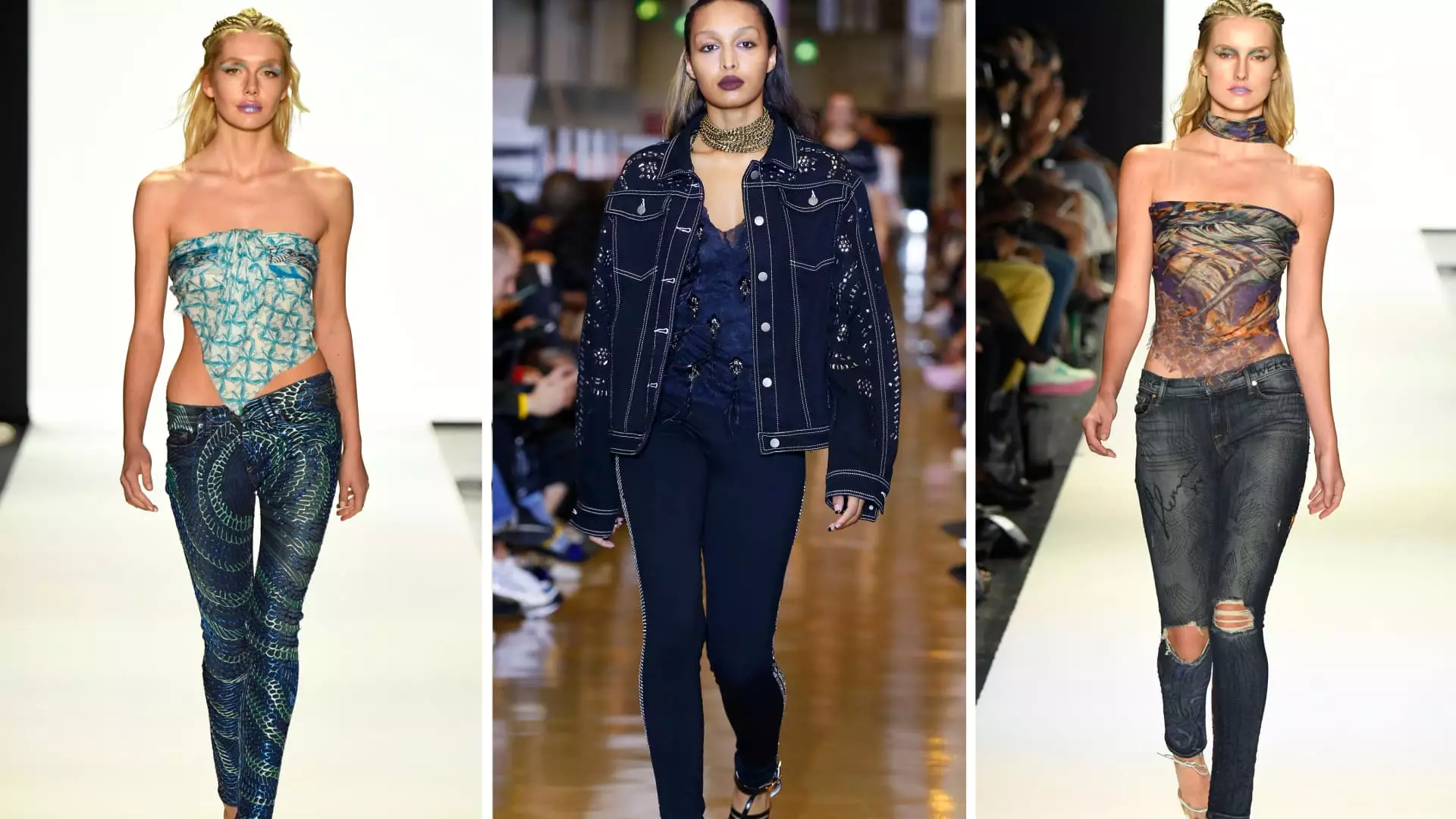Fashion, much like culture itself, is cyclical—a phenomenon that allows trends to re-emerge, often with a fresh twist. Enter the skinny jean, an emblematic piece of attire that dominated the wardrobes of millennials and early 2000s fashion enthusiasts. For a time, skinny jeans became the controversial choice of many, with their popularity waning amid the rise of baggier apparel. However, recent developments suggest a potential revival of this controversial staple. This article explores the possibility of skinny jeans returning to the forefront of fashion and assesses the implications of such a comeback.
In recent months, fashion runways and influencers have showcased a variety of skinny jeans, indicating a potential resurgence. TikTok influencer Alix Earle played a pivotal role in reigniting interest when she debuted a unique pair of skinny jeans through a collaboration with the denim brand Frame at the end of January. The launch was a catalyst, but whispers of a skinny jean revival had begun circulating well before her influential reveal. Retail analyst Janine Stichter predicts that the resurgence might be drawing energy from a noticeable uptick in Google search queries regarding skinny jeans, which saw a significant spike shortly after Earle’s debut.
Retailers are also noticing this trend. Brands like Reformation and American Eagle report increased demand for skinny jeans among consumers browsing their websites. The dynamics in style, notably the rising popularity of high boots paired with slim-fit bottoms, are driving renewed interest. As observed by Jen Foyle, the President and Executive Creative Officer at American Eagle, the key to trends is agility. Retailers must be ready to adapt quickly to the evolving preferences of consumers.
As is often the case with fashion trends, the skinny jean’s possible comeback originates on the runways. Notable designers such as Prada and Isabel Morant have introduced skinny pants with a contemporary twist. Rather than sticking solely to familiar solid colors, these designers are experimenting with plaid patterns and tailored fabrics, suggesting a departure from the “skin-tight” aesthetic that characterized earlier iterations of skinny jeans. Instead of emphasizing a restrictive fit, the current designs offer a more relaxed silhouette that embraces the jeans’ leg-conforming properties without going overboard.
Industry notable Michelle Gass, CEO of Levi Strauss, supports this perspective, emphasizing that the skinny jeans of tomorrow may differ from their predecessors. There’s consensus that while skinny jeans are set for a revival, they won’t merely emulate the styles of 2009-2011. Rather, they’ll be reinterpreted to align with current fashion sensibilities, combining both comfort and style.
Fashion isn’t just about aesthetics; it has tangible economic implications. According to retail analysts, a resurgence of skinny jeans would yield significant benefits for the apparel sector, and skinny jeans may start making their way back to store shelves as soon as this summer. As Shician noted, these trends can stimulate demand not only for jeans but for footwear and tops that complement the updated fitted aesthetic. When a new silhouette gains popularity, there’s usually a ripple effect; consumers tend to refresh their entire wardrobe, prompting purchases that span beyond jeans alone.
However, the timing of this transition becomes critical. Stichter suggests that while early appearances of skinny jeans may be seen during summer, the real push might be observed as fall approaches, coinciding with a seasonal shopping increase. This window presents a golden opportunity for retailers who are keen to capitalize on a trend that can lead to broader market engagement.
It’s important to recognize that not every consumer shares the same sentiment about skinny jeans. The ongoing debate regarding loose versus fitted is reflective of evolving fashion attitudes, particularly in the age of social media where trends shift at an astonishing pace. Many individuals, encompassing various demographics, have never abandoned skinny jeans despite current popularity trends leaning towards baggy fits. This ideological divide lends itself to a broader wardrobe philosophy: fashion diversity is essential.
As Gass aptly mentioned, a versatile denim collection should include a wide array of fits to cater to different moods and occasions. Thus, while some may seek to embrace the resurgence of skinny jeans, others can maintain their loose, oversized styles without feeling pressured to conform. In today’s fashion landscape, the key takeaway is inclusivity. Embracing different styles allows individuals to express their unique identities.
As skinny jeans begin to stir once more within the fashion industry, they bring along accompanying questions about style evolution, consumer preferences, and the economic landscape of retail. With designers offering updated silhouettes and retailers preparing for potential resurgence, it’s apparent that skinny jeans have once again garnered attention. Ultimately, whether interpreted as a return to the past or a fresh modern take, one sentiment emerges: variety is the spice of life in fashion, and the ability to embrace both skinny and loose styles only enrichens personal expression. Fashion should cater to all tastes, proving that even the most contentious trends can find a place in a dynamic wardrobe.

